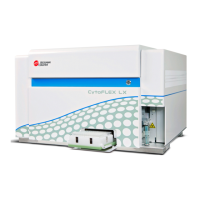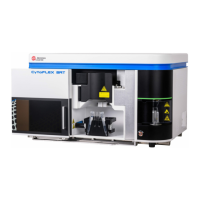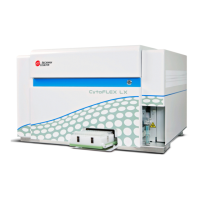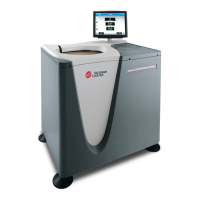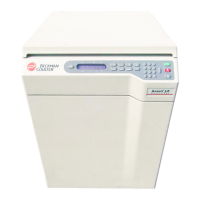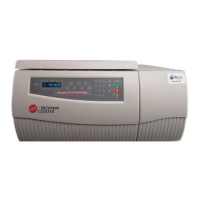PN 177196BB
7-5
DATA MANAGEMENT AND REVIEW
DATA ANALYSIS - AN OVERVIEW OF THE DILUTIONS AND MEASUREMENTS
7
Dilution Used to Determine RBC and PLT Results
1. The dilution made in the RBC bath is used to analyze red blood cells and platelets.
2. The RBC bath dilution is prepared in two stages:
a. Primary dilution: 10 µL whole-blood is diluted with 1.7 mL of Diluent in the
DIL1/HGB bath to form a 1:170 dilution (commonly referred to as first dilution)
b. Secondary dilution: 42.5 µL of this first dilution is transferred to the RBC bath
where it is further diluted with 2.5 mL of Diluent to form final 1:10,000 dilution.
3. The cells in the final 1:10,000 dilution in the RBC bath are counted and sized using the
Coulter principle.
4. The final 1:10,000 dilution in the RBC bath is used to:
a. Determine the RBC count.
b. Develop the RBC histogram which is needed to obtain the Hct, MCV, and RDW
parameter results.
c. Determine the Plt count.
d. Develop Plt histogram which is needed to obtain MPV, Pct, and PDW parameter
results.
5. Table 7.2-1 summarizes the dilutions made and the measurement method used to obtain
the RBC and platelet data. This same information is covered in
Table 2.3-2, Technical
Characteristics for Obtaining RBC and Platelet Counts
, in the Online Help System or the
Instructions for Use manual.
Table 7.2-1 Technical Characteristics for Obtaining RBC and Platelet Counts
Dilution Characteristics Primary Dilution for RBC and Plt:
Initial volume of whole-blood 10 µL
Volume Diluent 1700 µL
Primary dilution ratio 1:170
Secondary Dilution for RBC and Plt:
Volume of primary dilution 42.5 µL
Volume Diluent 2500 µL
Secondary dilution ratio 1:58.8
Final dilution for RBC and Plt results 1:170 x 1:58.8 = 1:10,000
Reaction temperature 35°C (95°F)
Measurement Characteristics Method of analysis Coulter Principle
Aperture diameter 50 µm
Count vacuum 200 mb (5.9 in. Hg)
Count period 2 x 5 seconds
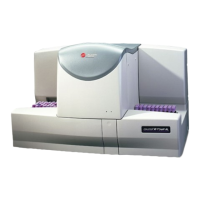
